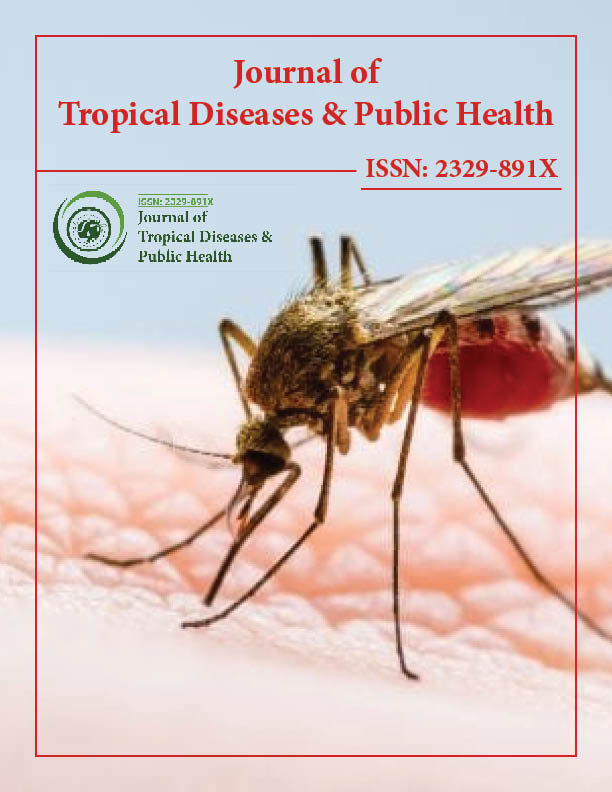Indexed In
- Open J Gate
- Academic Keys
- ResearchBible
- China National Knowledge Infrastructure (CNKI)
- Centre for Agriculture and Biosciences International (CABI)
- RefSeek
- Hamdard University
- EBSCO A-Z
- OCLC- WorldCat
- CABI full text
- Publons
- Geneva Foundation for Medical Education and Research
- Google Scholar
Useful Links
Share This Page
Journal Flyer

Open Access Journals
- Agri and Aquaculture
- Biochemistry
- Bioinformatics & Systems Biology
- Business & Management
- Chemistry
- Clinical Sciences
- Engineering
- Food & Nutrition
- General Science
- Genetics & Molecular Biology
- Immunology & Microbiology
- Medical Sciences
- Neuroscience & Psychology
- Nursing & Health Care
- Pharmaceutical Sciences
Opinion Article - (2024) Volume 12, Issue 4
Preparedness for Disease X: A Global Approach to Emerging Infectious Threats
Gao Xiulian*Received: 25-Nov-2024, Manuscript No. JTD-24-27842; Editor assigned: 29-Nov-2024, Pre QC No. JTD-24-27842 (PQ); Reviewed: 13-Dec-2024, QC No. JTD-24-27842; Revised: 20-Dec-2024, Manuscript No. JTD-24-27842 (R); Published: 27-Dec-2024, DOI: 10.35241/2329-891X.24.12.459
Description
Disease X represents an unknown pathogen that poses the risk of becoming a global health emergency. The recent history of pandemics such as COVID-19 has highlighted the unpredictable nature of infectious diseases. Disease X is a theoretical construct, emphasizing the need for heightened preparedness for novel diseases that can quickly escalate into public health crises. The concept also underlines the interconnectedness of human, animal and environmental health, often referred to as the "One Health" approach.
Emerging diseases are influenced by various factors including global travel, urbanization, climate change and increased human-wildlife interactions. Potential candidates for Disease X include novel viruses or bacteria that emerge from zoonotic sources. High-risk pathogens like coronaviruses, flaviviruses (such as Zika and Dengue) and filoviruses (e.g., Ebola) highlight the types of agents that could trigger pandemics. Additionally, the acceleration of antimicrobial resistance could lead to the rise of bacterial diseases that might be difficult to treat.
The epidemiology of Emerging Infectious Diseases (EIDs) is shaped by complex interactions between pathogens, hosts and the environment. Pathogens evolve through genetic mutations, allowing them to jump species or become more transmissible. Globalization facilitates the rapid spread of diseases, as evidenced by the swift transmission of COVID-19. Surveillance systems, such as those used by the Global Health Security Agenda (GHSA) and the WHO, are critical for early detection of outbreaks and containment strategies.
EID outbreaks typically follow a pattern: localized emergence, rapid spread and global dissemination, as seen with the 2013-2016 Ebola outbreak and the Zika virus epidemic. Understanding these dynamics helps in anticipating potential threats like Disease X.
The transmission dynamics of Disease X depend on its nature, including whether it is viral, bacterial, or zoonotic. Potential modes of transmission could include respiratory droplets, vecto rborne transmission (through mosquitoes or ticks), or direct contact with infected animals. Symptoms of Disease X may range from mild to severe, with a high potential for asymptomatic carriers, complicating early detection efforts.
The clinical presentation could include fever, respiratory distress, gastrointestinal symptoms, or hemorrhagic fever, depending on the pathogen. Early recognition and diagnostic capabilities are vital for containing the spread of any new infectious disease.
Preparedness for Disease X requires robust surveillance systems and an agile public health response. Current global health initiatives emphasize improving the ability to detect, diagnose and respond to outbreaks swiftly. Genomic sequencing technologies, such as Next-Generation Sequencing (NGS), play a crucial role in identifying pathogens during outbreaks, allowing for rapid diagnosis and containment measures.
Collaboration between governments, international organizations (such as WHO and the Centers for Disease Control and Prevention) and research institutions is essential in building a unified global response. Additionally, stockpiling essential medical supplies, developing vaccines and researching antiviral drugs are critical to mitigating the impact of any new infectious threat.
While managing the risk of Disease X, ethical dilemmas may arise, particularly around issues such as quarantine measures, resource allocation and access to treatments. Governments must balance the protection of public health with respect for individual freedoms. Moreover, the distribution of medical resources in a pandemic should be equitable, ensuring that vulnerable populations are not disproportionately affected.
Policy frameworks must prioritize transparency, communication and coordination to ensure a rapid and unified response. Strengthening global health regulations, such as the International Health Regulations (IHR), can help in managing future health emergencies more effectively.
Disease X serves as a reminder of the importance of preparing for emerging infectious threats, despite not knowing the exact pathogen. Proactive surveillance, swift response capabilities, international cooperation, and investment in research are key components in ensuring the global community is prepared for the next potential pandemic. Strengthening health systems and public health infrastructures worldwide will help mitigate the impact of future outbreaks and reduce the risks posed by Disease X.
Citation: Xiulian G (2024). Preparedness for Disease X: A Global Approach to Emerging Infectious Threats. J Trop Dis. 12:459.
Copyright: © 2024 Xiulian G. This is an open-access article distributed under the terms of the Creative Commons Attribution License, which permits unrestricted use, distribution, and reproduction in any medium, provided the original author and source are credited.

